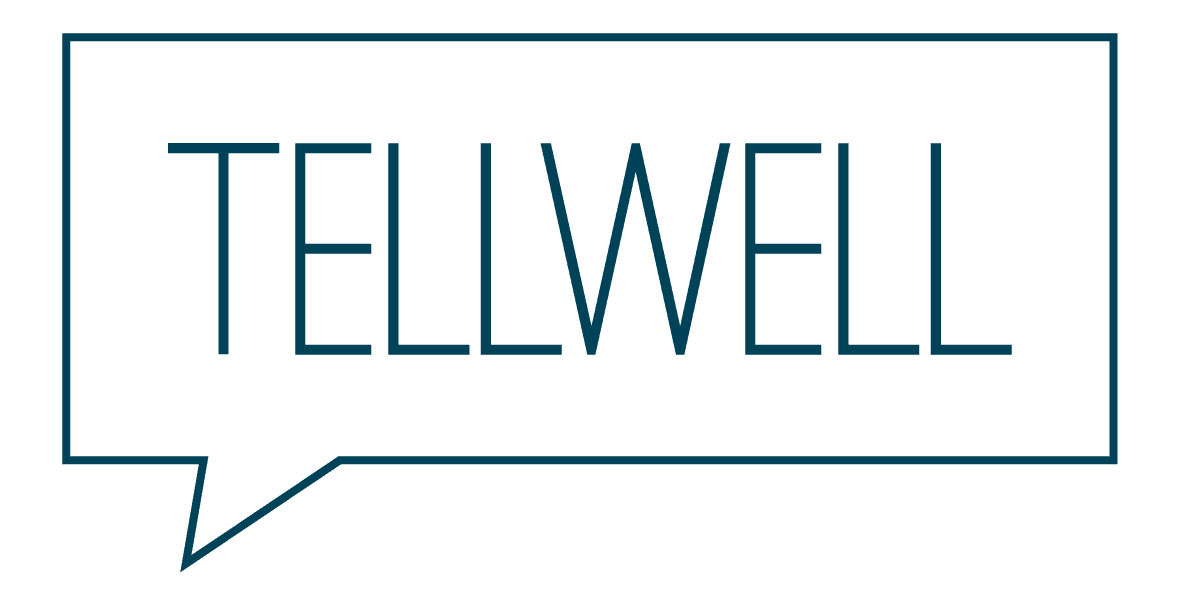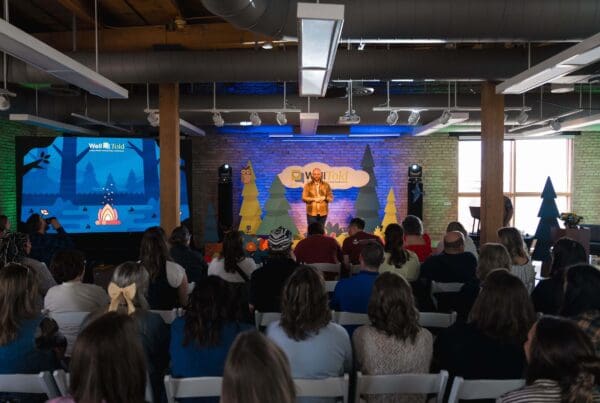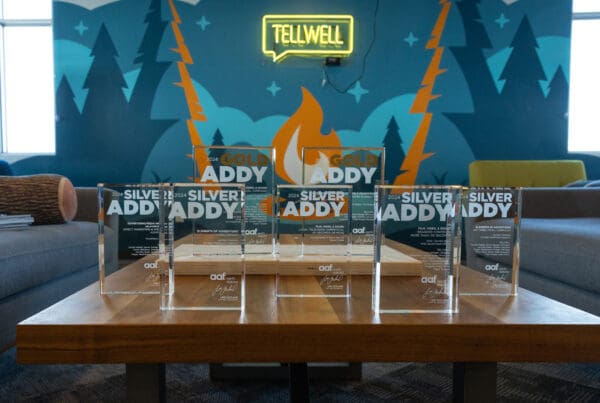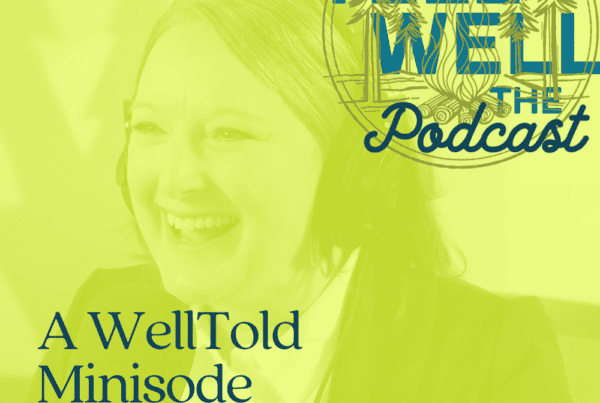Here’s what I found fascinating about my conversation with John McCoy: most nonprofits are sitting on content goldmines and don’t even know it. We’re talking about organizations creating incredible stories, producing moving videos, and crafting compelling narratives – only to use them once and file them away. If you’re a Development Director, Communications Manager, or nonprofit leader struggling to maximize your storytelling impact while managing tight budgets and even tighter timelines, this framework could completely change how you approach content strategy.
Meet the Movement Builder Behind We Are for Good
John McCoy didn’t start out planning to revolutionize nonprofit storytelling. Actually, he was just a design-loving college kid who followed a flyer to an internship at Oklahoma State University Foundation. But that decision led him to meet his future co-founder Becky Endicott and witness firsthand what happens when philanthropy operates at scale – $100 million gifts flowing in during a billion-dollar campaign.
Then reality hit. John and Becky moved to a healthcare foundation and immediately faced a crisis that would test everything they thought they knew about nonprofit communications. “The second week on the job, we’re getting publicly sued by Garth Brooks over naming rights of the hospital,” John shared. “We went from multi-million dollar campaigns to literally getting dragged through the national media cycle.”
That crisis became their catalyst. Instead of running from the challenge, they asked themselves a fundamental question: “If we’re going to ask people in the community to care, to give, to invest, we have to believe from within first.” This insight led them to develop what would become the Impact Arc framework – a systematic approach to building movements through strategic storytelling that transformed their employee campaign results by 10x.
The Impact Arc Framework: Your Blueprint for Content That Creates Believers
You know what struck me about John’s approach? He’s not just talking about creating more content. The Impact Arc framework is about getting serious leverage from the stories you’re already telling. “How many times do we do all that work and then it literally goes and sits in an annual report collecting dust?” John asked. “It’s in a file in our Google Drive somewhere and never gets the light of day.”
The framework breaks down into three essential components: Stage, Syndicate, and Stoke. Each phase builds on the previous one to create what John calls “dialogue at scale” – moving beyond one-way communication to genuine community engagement.
Stage is about strategic story preparation and positioning. This isn’t just about crafting a good narrative; it’s about understanding how this story fits into your larger movement-building goals. What belief are you trying to create? What action do you want people to take? The staging phase ensures every story serves your mission’s bigger picture.
Syndicate focuses on strategic distribution across multiple channels and formats. “The syndication lens,” as John calls it, looks at existing content and asks: “What has not gotten the light of day in front of all the audiences you’re trying to steward?” This phase is where the magic happens – transforming one piece of content into multiple touchpoints.
Stoke is about sustaining engagement and creating ongoing conversation. “We’re in the middle of the attention economy,” John reminded me. “That’s what we’re fighting for – how do we get in front of people and actually cut through the noise?” Stoking means you don’t just publish content and hope; you actively nurture the conversation around it.
The Syndication Lens: Mining Your Content Goldmine
Here’s where John gets really practical, and honestly, this might be the most immediately actionable part of our entire conversation. He challenges organizations to flip their content creation process completely. “In the old days, I would spend at least 80% of the time making the content and maybe 20% of the time repurposing it,” he explained. “But this way, think of your creation as your 20%. Now you’ve got 80% of the time to think of creative ways to share it, repurpose it, plug it in places.”
Take your annual gala, for example. Most organizations invest months of planning, create multiple videos, develop compelling scripts, and coordinate incredible storytelling moments on stage. Then what happens? “Those people in the room probably had an amazing experience, but your community probably missed it,” John pointed out.
But what if you approached that gala with a syndication lens from the beginning? You’ve already created four videos – how can those become social media series, email campaign content, or donor stewardship pieces? The script you wrote contains messaging that could power your year-end appeal. The stories told on stage could become podcast episodes, blog posts, or board presentation materials.
“You’ve got AI tools today that could probably help you take that and cut it and slice it even faster than ever,” John noted. But here’s the key insight: “We’re not just doing this to create a lot of noise. It’s got to be tailored to what are you trying to advance.”
Honoring Your Investment Through Strategic Repurposing
What gets me excited about the syndication approach is how it honors the incredible investment organizations make in their signature events and campaigns. “Those of us that have worked on a gala know that it takes months to get to that point,” John said. “The more leverage you’re getting out of that and getting it outside of the walls, it’s honoring the investment of your staff’s time, your beneficiaries’ time, everybody that’s pulled into this effort.”
This connects directly to Tellwell’s Seasons of Story framework – the idea that great content should have multiple seasons of impact, not just one moment of glory. When you create a powerful story during your spring campaign season, how does it continue working for you during cultivation season? How does it support your stewardship efforts? Strategic syndication ensures your best stories keep working year-round.
But syndication isn’t just about efficiency; it’s about equity. Not everyone can attend your gala. Not everyone opens every email. Not everyone follows you on social media. By taking your most powerful content and presenting it across multiple channels and formats, you’re ensuring your impact stories reach the widest possible audience.
Dark Social and the Power of Personal Connection
Here’s where John shared one of his most practical tactics, and honestly, it’s something I immediately wanted to implement. He calls it leveraging “dark social” – the power of direct, personal outreach to amplify your content.
“Who are your most engaged people?” John asked. Instead of just tagging people in social media posts, “what if you DM’d and said, ‘Hey, thanks for being part of this night. We’re trying to share this with the greater community. Would you help share this?'”
But here’s his ultimate hack: voice notes. “Get in voice notes with LinkedIn and just get in a flow. You can send 20, 30-second video clips in 15 minutes. Those people feel seen, they’re gonna be activated, and they’re gonna respond.”
This approach transforms content amplification from broadcasting to relationship building. When you personally invite someone to share your story, you’re not just asking for a repost – you’re inviting them deeper into your mission. “It’s like an invitation to get activated around it too,” John explained. “People want that.”
Building Movements, Not Just Managing Messages
Actually, here’s what I keep thinking about since our conversation: John and Becky didn’t just create a successful podcast or build a large community. They created what they call an “Impact Uprising” – a movement where people gather in more than 50 cities around the world, not because they’re being marketed to, but because they believe in something bigger than themselves.
That transformation from managing messages to building movements is exactly what the Impact Arc framework enables. When you stage stories strategically, syndicate them systematically, and stoke engagement consistently, you’re not just communicating about your work – you’re inviting people to become part of it.
The Seasons of Story framework aligns perfectly with this approach. Instead of treating each campaign as a discrete event, you’re building a year-round rhythm of engagement where every story, every piece of content, every interaction contributes to a larger narrative about change and possibility.
Making This Work in Your Organization
If you’re wondering how to actually implement this framework, start with John’s most practical advice: “Look at your work that’s already done. What is already created, what is already written down, that has not gotten the light of day?”
Maybe it’s last year’s impact report that contains incredible beneficiary stories. Maybe it’s video testimonials from your most recent campaign. Maybe it’s powerful moments from board presentations or volunteer training sessions. The content goldmine probably already exists in your Google Drive – you just need to mine it strategically.
Remember, this isn’t about creating more work for your already-stretched team. It’s about getting maximum impact from the incredible work you’re already doing. When you honor that investment through strategic syndication, you’re not just being efficient – you’re being effective.
Ready to transform how your organization approaches storytelling? The Impact Arc framework gives you a systematic way to turn every piece of content into a movement-building asset. And if you want to explore how strategic storytelling could work specifically for your mission, we’d love to have that conversation.
Want to see how strategic storytelling could work for your mission? Book a clarity call with Tellwell to discuss your goals and explore how the Seasons of Story framework can amplify your impact:https://wetellwell.com/get-started/



